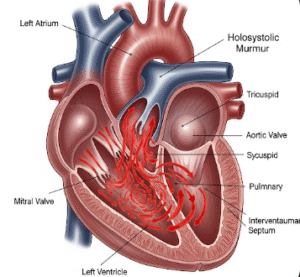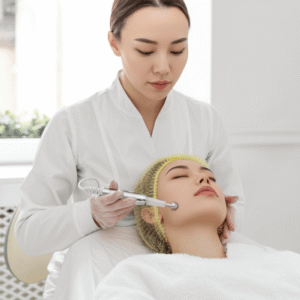Overview
Inguinal hernia repair in children is a common pediatric surgical procedure performed to correct a hernia in the groin area, where part of the intestine or abdominal tissue protrudes through a weak spot in the abdominal wall. Untreated hernias in children can lead to pain, incarceration, or strangulation, making timely surgery essential.
South Korea is recognized for advanced pediatric surgery, minimally invasive techniques, and expert anesthesia care for children, making it a preferred destination for parents seeking safe, effective, and low-risk hernia repair.
What is Inguinal Hernia Repair in Children?
An inguinal hernia occurs when:
- Abdominal contents, such as intestine or fat, protrude into the inguinal canal
- The hernia is noticeable as a bulge in the groin area, especially when crying or straining
- Can lead to pain, swelling, or bowel obstruction if untreated
Surgical repair involves:
- Reducing the herniated tissue back into the abdomen
- Closing the hernia defect in the abdominal wall
- Using sutures or mesh (rarely in very small children) to reinforce the area
Indications for pediatric hernia repair include:
- Visible or palpable groin bulge
- Pain, tenderness, or discomfort
- Risk of incarceration or strangulation
- Hernia detected in infants or young children even if asymptomatic
What are the Benefits?
- Prevents life-threatening complications → Incarceration or strangulation
- Minimally invasive techniques → Small incision, minimal scarring
- Quick recovery → Most children return to normal activity within days
- Low recurrence rate → High success under pediatric surgical care
- Safe anesthesia management → Specialized pediatric anesthesiologists in Korea
- Expert pediatric care → Experienced surgeons and child-focused hospitals
Procedure Details
1) How should I prepare for pediatric inguinal hernia repair?
- Preoperative evaluation → Physical examination, ultrasound if needed, and medical history review
- Medication guidance → Adjust any medications as advised by the surgeon
- Fasting → Typically 6–8 hours before surgery
- Pre-procedure consultation → Explain procedure, anesthesia, and recovery to parents and child
- Psychological preparation → Child-friendly explanations to reduce anxiety
2) What happens during the procedure?
- Anesthesia → General anesthesia for complete comfort and immobility
- Patient positioning → Supine with groin area exposed
- Surgical steps →
- Small incision over the inguinal region
- Herniated tissue identified and gently reduced back into the abdomen
- Hernia sac ligated and excised
- Defect in abdominal wall closed with sutures
- Incision closed with absorbable sutures or skin adhesive
- Duration → Usually 30–60 minutes depending on complexity and bilateral repair
- Monitoring → Continuous monitoring of heart rate, oxygen, and other vital signs
3) What happens after surgery?
- Immediate post-operative care → Observation in recovery for anesthesia effects
- Pain management → Mild analgesics as prescribed for comfort
- Activity restrictions → Avoid rough play, climbing, or strenuous activity for 1–2 weeks
- Wound care → Keep incision clean and dry; follow-up dressing changes if required
- Follow-up visits → Assess wound healing, remove sutures if necessary, and monitor for complications
Risks / Benefits
Risks
- ➤ Infection at incision site
- ➤ Bleeding or hematoma formation
- ➤ Recurrence of hernia (rare with proper technique)
- ➤ Temporary swelling or bruising
- ➤ Anesthesia-related complications (rare, well-managed in Korea)
Benefits
- ➤ Prevents life-threatening complications like incarceration
- ➤ Minimally invasive with low risk and high success
- ➤ Quick recovery and minimal disruption to daily life
- ➤ Low recurrence rate with expert pediatric surgeons
- ➤ Safe anesthesia and post-operative care for children
Recovery and Outlook
- Immediate recovery → Mild groin soreness; child usually alert after anesthesia within hours
- Short-term follow-up → 1–2 weeks to monitor wound healing
- Return to normal activity → Light activity within a few days; normal play in 1–2 weeks
- Long-term outlook → Complete correction with minimal scarring and negligible recurrence
- Post-procedure care → Monitor incision, prevent rough activity, and attend scheduled check-ups
South Korea provides comprehensive pediatric surgical care, anesthesia, and follow-up services to ensure safe and successful outcomes for children.
When To Call the Doctor
Contact your pediatric surgeon immediately if you notice:
- ⚠️ Redness, swelling, or discharge at the incision site
- ⚠️ Fever or signs of infection
- ⚠️ Persistent pain not relieved by medications
- ⚠️ Bulging in the groin area suggesting recurrence
- ⚠️ Vomiting, abdominal pain, or constipation indicating complications
Best Korea Option / Process
South Korea is a leading destination for pediatric inguinal hernia repair due to:
- Expert pediatric surgeons and anesthesiologists
- Minimally invasive, precise surgical techniques
- High success rate and low recurrence
- Comprehensive post-operative care and follow-up
- International patient support → Consultation, scheduling, language assistance
Top Hospitals for Pediatric Hernia Repair in Korea:
- Asan Medical Center, Seoul – Advanced pediatric surgery and minimally invasive techniques
- Samsung Medical Center – Expert child surgeons and post-operative care
- Seoul National University Hospital (SNUH) – Pediatric surgical excellence and monitoring
- Yonsei Severance Hospital – Comprehensive child-focused surgical care
👉 For parents seeking safe, effective, and minimally invasive inguinal hernia repair for their children, Korea offers expert surgical care with excellent outcomes and child-friendly recovery.













